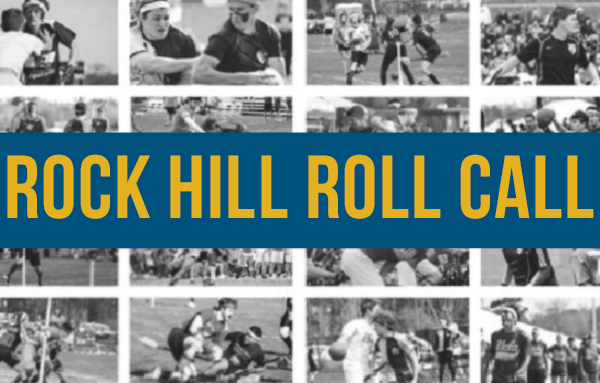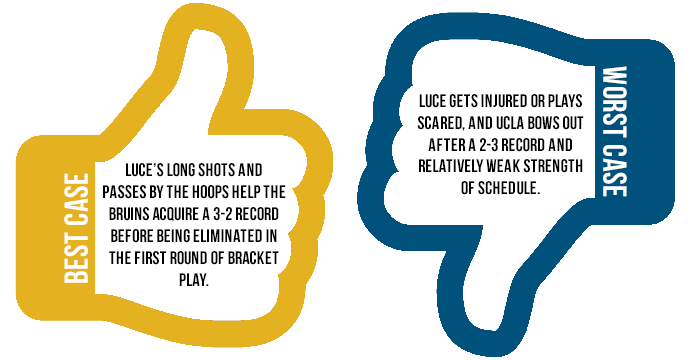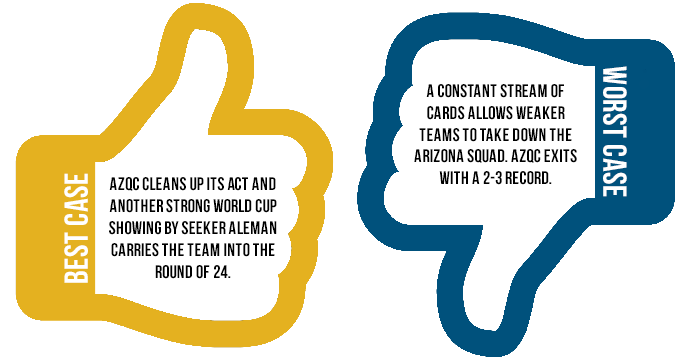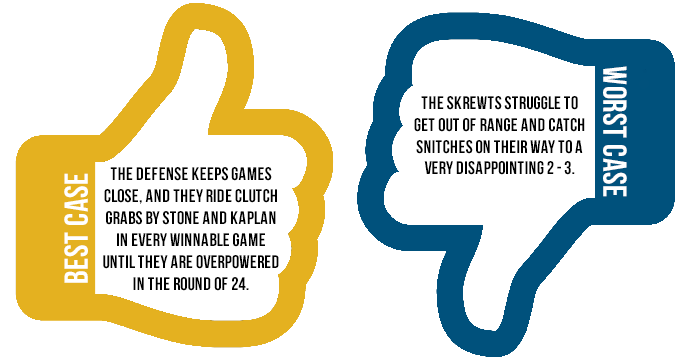Antwerp QC, Much of Belgian Core, Leaves Competitive Quidditch
Rock Hill Roll Call is your in-depth guide to the 80 teams that will compete for the title of World Cup 8 Champion. We’ve reached out to writers and analysts all over the country to bring you the lineups, strategies, focal points and aspirations of each and every attending team. Whether you are looking for a leg up on the competition or just want a detailed preview of the sport’s main event, this is the place for you.
 By Steve DiCarlo
By Steve DiCarlo
If UCLA expects to make it to bracket play in Rock Hill, the team needs to start proving it can take the sport seriously.
The Los Angeles-based team never stepped off campus to play in an official game until January’s LA Open, where it seemed to let its finals appearance–gifted through an easy bracket route–make the team think it was ready for the West Regional Championship. It was not.
UCLA used to be a team known for its depth in every position, but the success of the once-prestigious program appears to rest almost entirely on the shoulders of Team USA keeper Zach Luce, as displayed in the team’s games at LA Open. This was briefly thought to be untrue when UCLA beat Arizona State University 190*-90 on day one of the West Regional without the long-shot-loving keeper. However, they then lost to the same team 130*-90 the next day sans Luce. The Bruins were left needing to beat their own B-team, Wizards of Westwood, just to qualify for World Cup in the consolation bracket–a depressing path considering UCLA won the West Regional just two seasons ago with a number of players who are still on the team.
If UCLA wants to have any sort of legitimate success at World Cup, it needs to spend the next seven weeks actually going out and playing against the slew of skilled teams Los Angeles has to offer. The Bruins have most of the pieces needed to be an upper-tier team, and facing off against the Lost Boys, the Santa Barbara Blacktips and the LA Gambits as often as possible until they fly to Rock Hill might help those pieces finally fit together for the first time this season.
UCLA has the means and the personnel to get its mojo back, but it’s running out of time.
 By Anonymous
By Anonymous
It’s hard to understand why this year’s UCLA has failed to impress, since it retained most of the talent it had last season, only losing Team USA’s Brandon Scapa to the Lost Boys.
Zach Luce remains one of the best offensive keepers in the game, as he has an incredibly accurate long shot and knows how to make sure his passes hit their mark delicately enough that even his newer teammates can catch them. The team has strong point defenders in Michael Binger and Adam Richardson and one of the fastest off-ball players in the West in Corey Osto. Ryan Donahue and Sarah Simko have never dominated as a beater pair despite their chemistry off the pitch, but they do a good enough job fighting for or keeping control that UCLA shouldn’t fall apart in the bludger game. You’d think that the Bruins would dominate when all of their talented starters are in the game and that their downfall comes from a lack of depth outside their first line, but even their starters have struggled to put teams such as the non-qualifying Riverside Quidditch out of range this season.
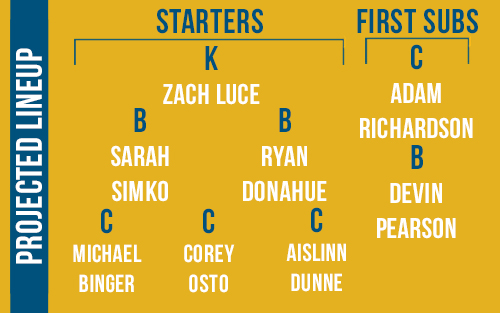 At its best, UCLA’s offense starts with Luce bringing up the quaffle with a point defender at his side, ready to do a pick and roll that will result in a drive to the hoops. It forces defenses to play a dual point, bringing an extra quaffle defender forward and giving Luce a better chance of making a long shot should he decide not to pass the ball. Osto can also be expected to make numerous jukes and cuts to the hoops for either a rebound should Luce miss his shot, or for a quick catch-and-release goal. On defense, Binger or Richardson will play a fairly high point, slowing down opposing offenses early so their team has time to set up its man coverage.
At its best, UCLA’s offense starts with Luce bringing up the quaffle with a point defender at his side, ready to do a pick and roll that will result in a drive to the hoops. It forces defenses to play a dual point, bringing an extra quaffle defender forward and giving Luce a better chance of making a long shot should he decide not to pass the ball. Osto can also be expected to make numerous jukes and cuts to the hoops for either a rebound should Luce miss his shot, or for a quick catch-and-release goal. On defense, Binger or Richardson will play a fairly high point, slowing down opposing offenses early so their team has time to set up its man coverage.
Binger and Richardson haven’t demonstrated the aggression or hustle they’re capable of this season, so larger ballcarriers can be left alone with them as offensive beaters go to attack UCLA’s beaters, allowing for an easy drive to the hoops that their skinny Team USA keeper will be entirely unable to stop. The one thing UCLA has excelled at this season is shutting down passing and shooting games with tight coverage, but if an opposing team is ready and willing to drive, it won’t have much difficulty taking down these former World Cup finalists.
 By Steve DiCarlo
By Steve DiCarlo
If Arizona Quidditch Club put more time into reading and playing by the rulebook, it could easily resemble–and possibly even take down–a top-tier Southwest team. These kids are all about hitting hard and hitting often, but their continuing failure to abide by the rules has been the team’s biggest downfall all season.
AZQC earned some well-deserved hype after a Lumberjack Invitational win over the LA Gambits last October, but this aggressive community team’s inability to practice together regularly has allowed the rest of the region to continue to grow while it plateaued. AZQC seemed entirely dependent on illegal hits and plays during its second match against its Los Angeles rivals at the LA Open, racking up countless cards and leaving Amanda Nagy alone in the bludger game for nearly half the match.
The first-year community team really doesn’t need to play dirty to win, and it doesn’t even need to practice to hang with the second-tier teams in the West. All of its starters have earned reputations for being strong tacklers and passionate players in past seasons, but former Northern Arizona University captain Cooper Davis’ “It’s only illegal if the referee saw it” mentality has clearly had an unfavorable influence on the squad.
AZQC could dominate games just off of Nagy’s elite beating, Ethan Kapke’s impressive physicality and speed, Margo Aleman’s leadership and Nate Olsen’s skillful drives, but for whatever reason, the team relies more on inattentive refs than its many talents.
Nagy was recently named the USQ’s Referee of the Month and she has been heard yelling at her teammates to play a cleaner game all season. A Kapke red card played a huge role in AZQC’s downfall at the West Regional, so if the team hopes to make it far in Rock Hill, its players need to start listening.
 By Anonymous
By Anonymous
If former Lost Boys Quidditch Club beater Nagy and former University of Texas chaser/seeker Aleman hadn’t joined AZQC at the start of the season, this first-year community team could have been considered an Arizona all-star team. The squad is composed of some big names from around the state, including Kapke, who almost single-handedly took down the Lost Boys in the West Regional finals alongside Arizona State University last season; Olsen, who was one of regions’ top drivers and most intimidating presences on Northern Arizona’s team; Nate Cortazzo and Davis, Arizona State and Northern Arizona graduates respectively, who have made names for themselves over the years. The addition of Nagy and Aleman only makes AZQC’s roster all the more formidable, as player-for-player, it should be able to compete with nearly every team it will encounter at World Cup VIII.
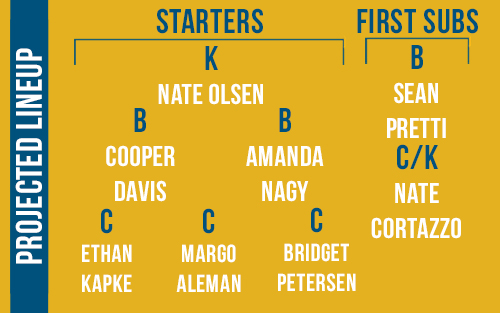 Between Davis, Kapke and former University of Arizona standout Savio Vu, AZQC has a stream of beaters who are always ready and willing to run 1.5 on offense, forcing beaters back to their hoops or distracting them long enough for Olsen to charge through entire defenses for a dunk or Aleman to make the perfect cut to the hoops for an alley-oop.
Between Davis, Kapke and former University of Arizona standout Savio Vu, AZQC has a stream of beaters who are always ready and willing to run 1.5 on offense, forcing beaters back to their hoops or distracting them long enough for Olsen to charge through entire defenses for a dunk or Aleman to make the perfect cut to the hoops for an alley-oop.
Defensively, nearly every male quaffle player on this community team is capable of making a hit, though AZQC trusts in this fact a bit too much and thus allows for its man coverage to slack slightly. The team’s lack of an above-average female chaser also gives opposing offenses a chance to create mismatches that can lead to easy goals.
Aleman’s elite seeking ability forces teams to pull out of range as quickly as possible, however, AZQC’s starters do, literally, whatever it takes to ensure this does not happen. If captains and coaches ask referees to watch for behind-the-back tackles and continually ignored beats, the Arizona squad might fall apart in the first few minutes of the game and will struggle or be unable to recover.
In short, to beat this squad, force its players into a state of desperation. Pressure AZQC’s female chasers into mismatches and utilize frequent cuts around the hoops. Following this simple strategy, even lower-tier teams have the potential to take down one of the West’s fiercest giants.
 By Dan Hanson
By Dan Hanson
As a team, the Silicon Valley Skrewts have weathered significant change and always manage to show improvement year after year, but the Skrewts’ x-factor is the skill set that Alex Makk brings to the pitch.
Makk is a second-year member of the team who transferred from Arizona State University–a move that went relatively under the radar following the West Regional Championship last November. Makk, originally from the Bay Area, still resides in Phoenix and cannot practice with the Skrewts. While many community teams recruit people from outside their local area, none are as dependent on one of those players as the Skrewts are with Makk.
Without him, the Skrewts exhibit a much clumsier offense that relies on easy drives to the hoops against a bludgerless defense. Makk opens up the whole field, adding a ball-carrier option from a different position than their three capable keepers: Andrew Covel, Chris Lock and Kevin Oelze. He is also excellent at scoring on his own, whether driving or shooting.
Makk’s presence just makes everyone better: Lucy Miller and Covel get more space to use their great scoring abilities when Makk is on the field; the pressure on the beaters is alleviated by Makk’s superior point defending; and he works with the Skrewts’ system beautifully despite limited practice time with the team.
 By Anonymous
By Anonymous
The key to beating the Skrewts is simple: a strong passing game. Their beater defense is known to be top notch, their keepers are great shot-blockers and their chaser defense is solid and stingy. They do not let up easy goals, period. Teams should expect to earn their goals with at least two passes and by involving their beaters in the offensive play.
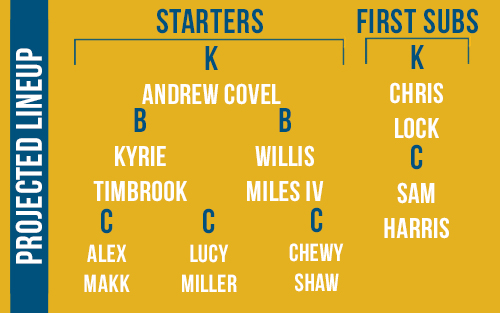 Beaters Kyrie Timbrook and Willis Miles IV both tend to play high up on defense to address an advancing offensive beater. They are great at taking that beater out, but both are susceptible to being beat when they and the offensive beater throw simultaneously. Neither beater is great at dodging, but the pair are skilled catchers. If the offense’s second beater is nearby to pick up the stray bludgers when this happens and the offensive quaffle players are ready to capitalize on the opportunity, the Skrewts will let up goals. Otherwise, their defense will take advantage of small mistakes and turn them into offense.
Beaters Kyrie Timbrook and Willis Miles IV both tend to play high up on defense to address an advancing offensive beater. They are great at taking that beater out, but both are susceptible to being beat when they and the offensive beater throw simultaneously. Neither beater is great at dodging, but the pair are skilled catchers. If the offense’s second beater is nearby to pick up the stray bludgers when this happens and the offensive quaffle players are ready to capitalize on the opportunity, the Skrewts will let up goals. Otherwise, their defense will take advantage of small mistakes and turn them into offense.
Offensively, the Skrewts are good shooters and dunkers. The key is to force them to make a shot or pass sooner than they would like. Lock, Covel and Makk may sink the occasional long shot, but they will throw away possession more often than not if they are left without options. It is crucial to keep Miller away from the hoops with or without the ball, as she has become the Skrewts’ biggest threat as a receiver. Chewy Shaw uses his great speed to get to the hoops quickly, but if opponents keep him isolated on the outside of the goals, he is less dangerous. The Skrewts require a strong passing game to beat them on defense and are vulnerable if forced to pass on offense.
Graphics by Amanda Dallas. Photo illustration by Mike Iadevaia.
Archives by Month:
- May 2023
- April 2023
- April 2022
- January 2021
- October 2020
- September 2020
- July 2020
- May 2020
- April 2020
- March 2020
- February 2020
- January 2020
- December 2019
- November 2019
- October 2019
- August 2019
- April 2019
- March 2019
- February 2019
- January 2019
- November 2018
- October 2018
- September 2018
- August 2018
- July 2018
- June 2018
- April 2018
- March 2018
- February 2018
- January 2018
- November 2017
- October 2017
- July 2017
- June 2017
- May 2017
- April 2017
- March 2017
- February 2017
- January 2017
- December 2016
- November 2016
- October 2016
- September 2016
- August 2016
- July 2016
- June 2016
- May 2016
- April 2016
- March 2016
- February 2016
- January 2016
- December 2015
- November 2015
- October 2015
- September 2015
- August 2015
- July 2015
- June 2015
- May 2015
- April 2015
- March 2015
- February 2015
- January 2015
- December 2014
- November 2014
- October 2014
- September 2014
- August 2014
- July 2014
- May 2014
- April 2014
- March 2014
- February 2014
- January 2014
- November 2013
- October 2013
- September 2013
- August 2013
- July 2013
- June 2013
- May 2013
- April 2013
- March 2013
- February 2013
- January 2013
- December 2012
- November 2012
- October 2012
Archives by Subject:
- Categories
- Awards
- College/Community Split
- Column
- Community Teams
- Countdown to Columbia
- DIY
- Drills
- Elo Rankings
- Fantasy Fantasy Tournaments
- Game & Tournament Reports
- General
- History Of
- International
- IQA World Cup
- Major League Quidditch
- March Madness
- Matches of the Decade
- Monday Water Cooler
- News
- Positional Strategy
- Press Release
- Profiles
- Quidditch Australia
- Rankings Wrap-Up
- Referees
- Rock Hill Roll Call
- Rules and Policy
- Statistic
- Strategy
- Team Management
- Team USA
- The Pitch
- The Quidditch Lens
- Top 10 College
- Top 10 Community
- Top 20
- Uncategorized
- US Quarantine Cup
- US Quidditch Cup

